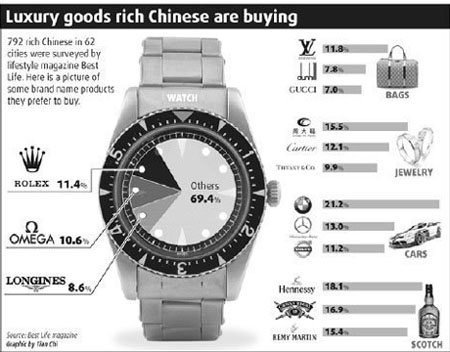September 01, 2009 - Alan Braithwaite andMartin Christopher, LCP Consulting
As the economic conditions get harder, therewill be just onemantra for CEOs and their Boards:“manage for cash”.
Companiesmay use a variety of terms to express this, talking about “tied up capital” and “freeing up cash flow”. But the focus is, quite simply, getting and keeping asmuch cash as possible. Formany companies, the extent to which they can do this – even their survival over the next 18months – lies in how well theymanage their assets in the supply chain.
And this will be harder than ever. Customers are demanding faster delivery in smaller lots with extended credit terms. Their aimis to take inventory out and pay later to release cash,while at the same time protectingmargins by avoiding obsolescence and write offs. Suppliers are seeing an accentuated decline in volumes, as their customers de-stock, and reduced manufacturing and supply efficiencies as batch cycles shrink. They are having to wait longer to get paid and often cannot pass that pain on since smaller suppliers, on which they are dependent,may simply stop trading. At the same time, commercial risk levels have increased as supply chains have become globally sourced, extended in time and geography, and intrinsicallymore vulnerable to invisible hazards, such as unexpected bankruptcy, capacity withdrawal, changes in service terms and regulatory change.
These challenging conditions do not stop with the downturn and underlying risks: the recovery phase may be equally traumatic. As production and distribution capacity exits themarket in response to poor conditions, there will be shortages during the upturn whichmay be exploited through rapidly rising prices. Inflationmay be linked with growth causing interest rates to rise and curtailing the recovery. We believe that how organisationsmanage their supply chains will be a critical success factor in their survival and success in the next few years. In the long run thismicro-economic performance willmake all the difference at the national level.
While supply chain thinking and ideas of best practice have developed and stabilised over the last 30 years, their application inmost companies is still relatively immature even though they have the potential to transform almost every business in every sector.While supply chain thinking and ideas of best practice have developed and stabilised over the last 30 years, their application inmost companies is still relatively immature even though they have the potential to transformalmost every business in every sector.Much of this success will depend not on new techniques but on the more effective application of techniques with whichmanagersmay already be familiar.However there is one key new capability required for the current economic climate.
Applying known techniques more effectively
Let’s start with re-visiting the big idea behind supply chainmanagement. It is that managing the interactions between the functions and entities in the chain for the benefit of the whole chain, rather than the individual,will yield a dramatically better overall performance. This can takemany forms, but typically organisations benefit frommore free cash due to less inventory and assets, better tradingmargins and lower operating costs.
We’d highlight five established maxims for success:
1. Reduce unprofitable complexity by truly understanding howboth customers and products erodemargin:
The universal experience is that 15% of customers and products erodemore than 50% of the profit potential. Designing this group out or designing their profitability back in is a key step to connect the supply chain to the company’s performance. The experience is that these unviable activities are often detracting fromprofitable activities as well as creating losses in their own right.We call this ‘cost to serve’ and have found it to be a profoundly powerful business tool.
2.Build customer service excellence into your supply chain:
Service excellence is often discussed as amarketing imperative, but seldom connected to the true cost of non-performance both in sales and recovery costs.Outstanding performance protects the customer base that you want to keep and avoids the costs to replace themwhen they leave, as well as making good yourmistakes.Operational excellence lead by supply chain design and planning is a critical capability.
3. Become the preferred customer of your key suppliers:
No company can survive without its suppliers and nurturing the ones that are long termcritical does not mean being soft with them. The experience is that if you align to them they will give youmore for less; but if you just negotiate on cost, you willmiss out on benefits and they will leave you high and dry when times get tough.
4. Design, plan and execute for agility:
In the current climate, demand will be unpredictable and volatile; companiesmust be able to respond without lots of inventory and huge capacity and asset surpluses to cope with change. Agility is about fast flexible processes tomeet real customer demand and put in place only inventory that will not be a risk to the business. Speed is the key; fast and accurate processes have been shown to improve customer service and reduce inventories andmanufacturing assets.
5. Synchronise and integrate to eliminate waste and cost:
Toyotamade the seven wastes famous and its practice of waste elimination has lead to world class status in manufacturing;TESCO has applied lean thinking equally effectively to its business. Both those companies would concede that there is still much more to play for; however they are in a strong position entering the downturn.
Collaboration – the new critical factor in success
Collaborating in order to share resources and leverage scale is the newmantra for competitiveness in a difficult economic world. Companies can no longer afford to try to control some aspects of their business on the basis that it 'might be' a competitive advantage. The future will be about both co-operating and competing through shared services and assets; service providers will need to create blocks of scale and give a level of cost and service transparency that has been lacking.
Thismay extend to shared supply,manufacturing capacity, and distribution and logistics. There are precedents for the competition authorities taking exception to exclusive industry arrangements and the sharing of cost and contracting data between competitors.Newspaper andmagazine distribution is a current running example where economics and service have forced service structures that have been viewed as anti-competitive. But that industry is still fiercely competitive on its content and the implications of the logistics alternatives would likely be reduced volumes and higher costs. Executives tiptoe on eggshells when approaching such potentially risky situations as theymay be inadvertently personally liable. In future the competition authoritiesmay need to adjust their thinking and guidance to reflect industrial and real competitive realities.
Together, the application of thesemaxims will release cash fromstock and assets, protect the profitable parts of the business and create the focus that will be needed to thrive in the recovery.Now is the time to act in order to be there and ready.
IBC Ltd.
http://www.logisticsit.com/









